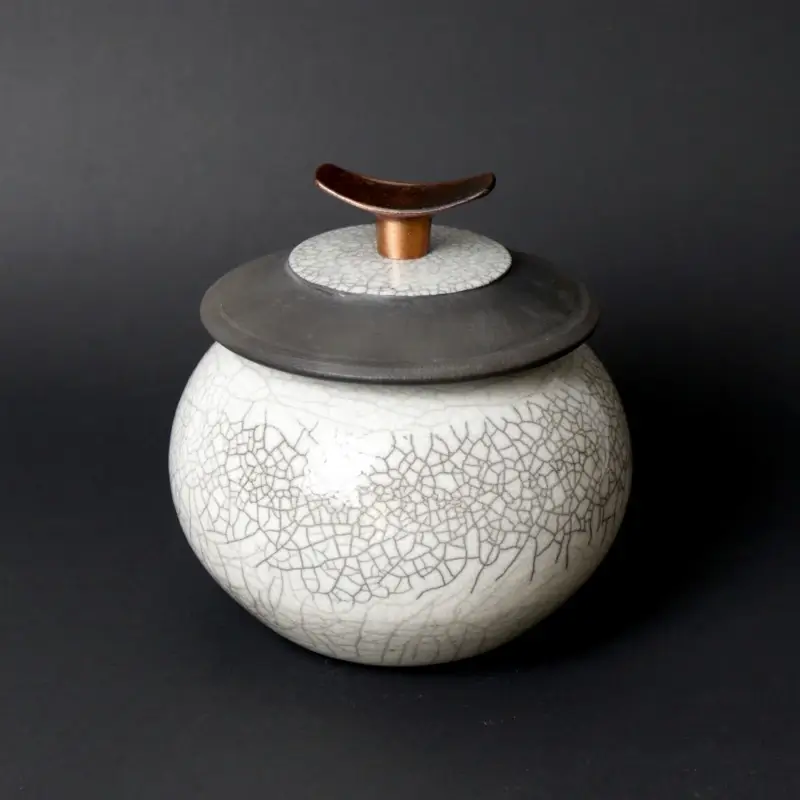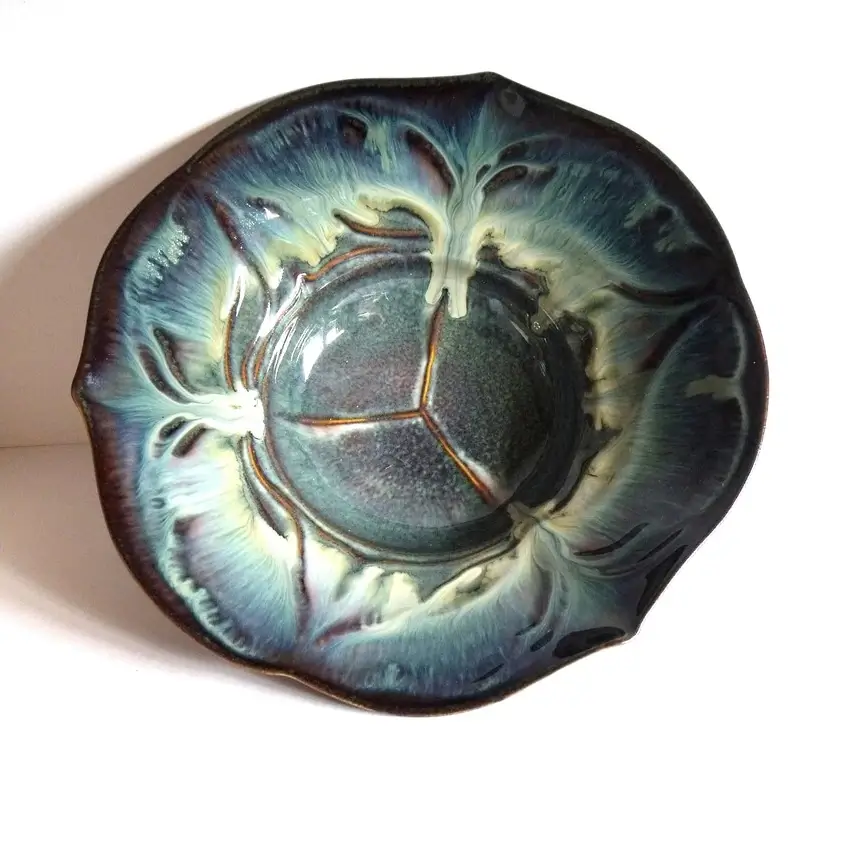Introduction to Glazing: A Final Touch of Beauty in Ceramics

Glazing is the technique of applying a layer of vitrifiable substances on ceramics, which after firing in a kiln at high temperatures, melts to form a hard glassy surface that can be decorative, functional and protect the underlying piece.
The Art of Ceramic Glazing
Glazing in ceramics is more than just a final step in the creation of pottery pieces; it is an open door to a world of creative and technical possibilities. This process involves the application of a suspension of ground minerals on the surface of previously fired pieces, known as “bisque”. The glaze can be both functional and decorative, providing everything from a waterproof covering to a unique aesthetic finish.
Where does glazed ceramics come from?
The origin of glazed ceramics dates back to the fourth millennium BC, with slow development due to the need to find suitable materials and firing technologies. Ancient Egyptian faience was one of the earliest examples of self-glazing. Pieces with a vitreous coating emerged around 1500 BC, after the invention of glass, with glazing techniques in the Middle East, Egypt and China. By 100 BC, lead glazing was common in the Old World. Significant innovations also occurred in Japan and in Islamic art, where opacified glazes were developed with tin and clays of various colors.
This fundamental pottery technique, which has been perfected over the centuries, is based on the precise composition and application of ceramic materials, including alkaline glaze and silica.
Do all ceramics need to be glazed?
Although glazing is common, not all ceramics require this process. Materials such as porcelain and high-temperature stoneware can be glazed without the need for additional techniques, while others, such as earthenware, generally require a vitreous element on their surface for functional uses such as cookware.

Main Components of Glazing
A typical glaze contains five basic components or raw materials: silica, alumina, fluxes, colorants and modifiers. Silica forms the glaze surface when melted, while the other ingredients adjust properties such as melting temperature and opacity.
Chemistry plays a crucial role, as the interaction of the oxides with lead and other elements determines the final quality.
It should be added that the use of lead is increasingly avoided, especially if the part is intended for food use.
Types of Ceramic Glazes
Glazes are classified according to their firing temperature and finish. There are low, medium and high temperature, as well as glossy, matte, semi-gloss and satin finishes. Each type offers different aesthetic effects and not all are suitable for food use, especially those containing cadmium or lead.
Some artists use the single firing glazing technique, although it is more risky and requires more experience.
There are several types of vitrification techniques in ceramics, each with different characteristics and effects. Some of the most common results are:
- Transparent: Allows you to see the clay underneath, it is ideal for highlighting natural textures and colors of the ceramic.
- Opaque: Provides a solid, non-transparent finish, useful for hiding the underlying clay.
- Ash: It is created with wood ash and produces varied natural and organic effects.
- Celadon: Characterized by its pale green and translucent color, it is typical of Asian ceramics.
- Crackle: Provides a network of fine cracks for a decorative effect. An example is the effect on raku ceramics.
- High Fire: Requires high temperatures and produces durable finishes suitable for everyday use.
- Low Fire: Fired at lower temperatures, it offers a wide range of vivid colors but is less resistant.
- Enamel: Includes additional substances to produce special effects such as gloss or specific textures.

Tips and Tricks for Proper Glazing
- Compatibility between clay and glaze: It is essential that the glaze be compatible with the clay to prevent problems such as the formation of bubbles and cracks.
- Proper chamfering: This preliminary step is essential for the glaze to adhere properly.
- Avoid resistance stains: Lotions or oils can repel the glaze, so it is important to keep hands clean when handling ceramics.
- Sand the beveled ceramic: To smooth edges and eliminate irregularities before applying the glaze.
- Clean well before glazing: It is crucial to remove any dust or residue from the bisqued ceramic with a damp sponge.
- Mix the glaze well: Make sure to obtain a uniform consistency, which may require straining the mixture.
- Keep the bases clean: Using wax resist can be helpful in preventing the glaze from adhering to the base of the part.
- Note-taking: Recording information from our “tests” can be very useful for future projects.
Glazing is more than a mere finish; it is an artistic element of art that transforms clay pieces. By mastering this technique, ceramists not only protect and embellish their works, but also imprint on them a personal and unique stamp.
We hope you liked this post. It will help us if you share it on social networks


